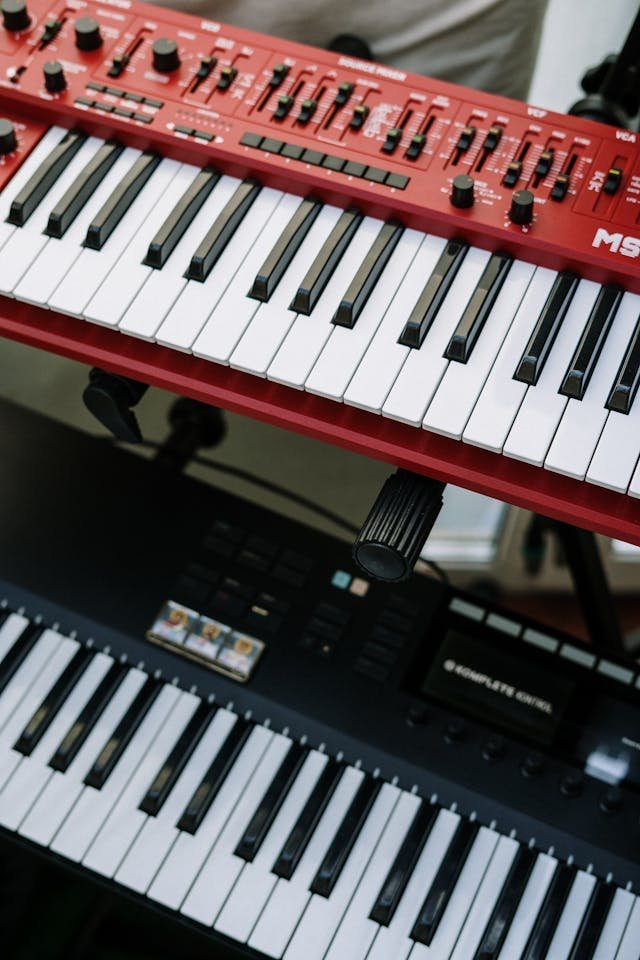Producing electronic dance music (EDM) at home has never been easier, thanks to a wide range of accessible tools and software. Whether you’re a beginner or an aspiring pro, the right equipment and programs can help you bring your musical ideas to life. This guide highlights the top tools and software for EDM production and provides tips for choosing the best ones for your needs.
Getting Started with EDM Production
Before diving into tools and software, it’s important to understand the basics of EDM production. The core of any EDM track lies in:
- Melodies: Synthesizers are often used to create catchy and emotional hooks.
- Beats: Drum machines and samples help build the rhythmic foundation.
- Basslines: Low-end elements drive energy and groove.
- Effects: Reverb, delay, and modulation add depth and atmosphere.
With these elements in mind, let’s explore the tools that can help you craft your sound.
1. Digital Audio Workstations (DAWs)
A DAW is the central hub of any music production setup. It’s where you arrange tracks, record audio, and apply effects. Some of the best DAWs for EDM production include:
- Ableton Live: Known for its intuitive interface and powerful features, Ableton Live is a favorite among EDM producers. Its session view is perfect for live performances and experimenting with ideas.
- FL Studio: With its user-friendly interface and extensive plugin library, FL Studio is ideal for beginners and professionals alike.
- Logic Pro X: Exclusively for macOS, Logic Pro X offers advanced features and a polished design, making it a popular choice for many producers.
- Cubase: A versatile DAW with excellent MIDI editing tools, suitable for creating complex compositions.
2. Synthesizers and Plugins
Synthesizers are essential for creating unique sounds in EDM. Many come in plugin format, allowing you to use them directly within your DAW. Top options include:
- Serum: A highly versatile wavetable synthesizer, Serum lets you design sounds with incredible precision.
- Massive: Known for its powerful bass and lead sounds, Massive is a go-to for many EDM subgenres.
- Sylenth1: A classic virtual analog synthesizer, perfect for lush pads and energetic leads.
- Arturia V Collection: A suite of vintage synth emulations that offer timeless sounds.
3. Drum Machines and Sample Packs
Drums are the backbone of any EDM track, and having the right tools is crucial. Consider these options:
- Xfer Nerve: A drum machine plugin designed specifically for EDM producers, offering intuitive drum sequencing and editing.
- Battery 4: A powerful drum sampler from Native Instruments, great for managing and manipulating samples.
- Sample Packs: Websites like Splice and Loopmasters offer pre-made drum loops, one-shots, and effects to jumpstart your creativity.
4. Mixing and Mastering Tools
Polishing your track for release involves mixing and mastering. These tools can help:
- iZotope Ozone: A comprehensive mastering suite with AI-assisted features for achieving professional results.
- FabFilter Pro-Q 3: An advanced EQ plugin for fine-tuning your mix.
- Waves Plugins: A collection of high-quality plugins for compression, reverb, and more.
5. MIDI Controllers and Hardware
While software is the backbone of EDM production, hardware can enhance your workflow and creativity:
- Novation Launchpad: Perfect for triggering loops and samples, especially in Ableton Live.
- Akai MPK Mini: A compact MIDI keyboard with pads and knobs for creating melodies and beats.
- Native Instruments Maschine: A hybrid hardware-software setup for producing and performing.
6. Tools for Mixing and Arrangement
Proper arrangement and seamless transitions are critical in EDM. Consider these tools:
- Mixed In Key: Helps you analyze and match track keys for harmonic mixing.
- Soundtoys Plugins: Adds creative effects like delays, filters, and saturation to enhance transitions.
Free vs. Paid Tools: Pros and Cons
If you’re just starting, free tools can be a great way to experiment without spending a lot:
- Free DAWs: Try Audacity or Tracktion for basic production.
- Free Synths: Plugins like Vital and Dexed offer impressive features for no cost.
However, investing in premium tools often provides better sound quality, advanced features, and support, making them worthwhile for serious producers.
Tips for EDM Production Success
- Learn the Basics: Master your DAW and understand music theory.
- Experiment: Don’t be afraid to explore new sounds and techniques.
- Practice Sound Design: Create your own unique synth patches and effects.
- Collaborate: Work with other producers to expand your skills and network.
- Stay Consistent: Regular practice is key to improving your craft.
Conclusion
With the right tools and software, producing EDM at home is an exciting and achievable goal. Whether you’re crafting bass-heavy bangers or melodic masterpieces, these recommendations will set you on the path to success. So, fire up your DAW, experiment with sounds, and start creating tracks that make the world dance!









